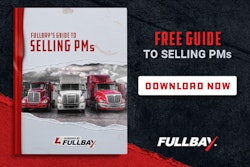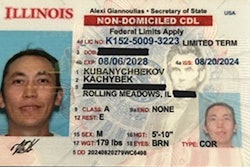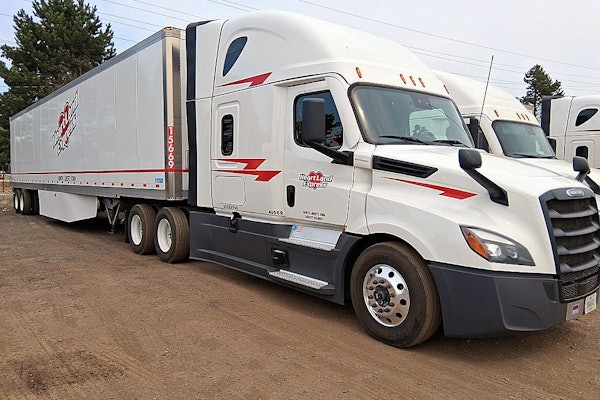New diesel and maintenance technicians can perform inspections sooner, thanks to a five-year waiver that the Federal Motor Carrier Safety Administration (FMCSA) granted this year.
The exemption, requested by the American Trucking Associations' Technology & Maintenance Council (TMC), shortens the required training time for technicians from 12 months to 540 hours (roughly four months).
The change, in effect from Jan. 16, 2025, through Jan. 15, 2030, enables new technicians to conduct inspections and maintenance sooner, helping alleviate the ongoing shortage of qualified workforce in the industry.
It allows for self-certification, with technical schools, fleets, and repair shops required to provide documentation of completion in alignment with TMC’s Recommended Practices (RPs) and training materials. It allows fleets and schools to accelerate the time it takes to enable new technicians to perform or serve as a brake inspector, perform brake maintenance or perform preventative maintenance inspections.
Previously, in addition to a full year of training, new technicians needed hands-on experience before they could complete annual commercial vehicle inspections or work on brake systems.
“We think that this is a big advantage, especially with the current shortage of qualified technicians in the commercial vehicle industry,” Robert Braswell, TMC executive director, said during a webinar hosted by TMC and the ASE Education Foundation. “We believe this can substantially help onboard new technicians to do more productive roles much more quickly.”
American Transportation Research Institute noted in a report that 66.5% of maintenance facilities are understaffed and an average of 19.3% of technician roles remain vacant.
One trend Braswell said they noticed is that technicians are most likely to drop out of their industry within their first 12 to 24 months.
“This acceleration in this exemption may help mitigate the loss,” he said.
For fleets, this means technicians can be more productive within their first four months of employment, Braswell said. Service dealers can get new technicians, increasing operating revenues more quickly, while technical schools can offer an accelerated pathway to onboard new technicians using TMC’s materials as a basis for its curriculum.
[RELATED: Kenworth looks to address diesel tech shortage with new partnership]
How to participate
Braswell said the exemption recognizes TMC’s RP training and certification as the industry standard. TMC has created more than 500 RPs, grouped into 15 sections, offering individual procedures for inspecting, repairing, or replacing components on commercial vehicles.
The RPs are available in TMC’s 2024-2025 Recommended Practices Manual and Preventative Maintenance Inspection (PMI) Guidelines for Tractors and Trailers series.
The training provider — fleet, service dealer, or technical school — can self-certify its inspector training program with the following requirements:
- Provide an inspector training program aligned with TMC’s RPs, which are updated occasionally and include at a minimum PMI Guidelines for Class 7 & 8 Diesel Powered Tractors; PMI Guidelines for Light & Medium-Duty Vehicles (excluding guidelines applicable to light-duty vehicles); PMI Guidelines for Trailers & Material Handling; and PMI Trainer/Instructor for Class 7 & 8 Diesel Powered Tractors.
- Provide at least 540 hours of classroom and hands-on instruction or 210 hours of classroom and hands-on instruction for participants who already completed at least 330 hours of combined training and have successfully passed the ASE T4 and T8 tests.
- Deliver training with one-third of instruction in a classroom setting and two-thirds in a laboratory or hands-on.
- Notify ATA of its self-certification as a training provider and specify the effective date.
- Issue completion certificates to graduates confirming that they have successfully finished an inspector training program.
- Maintain a list of all certificate holders and verify whether a given individual has successfully completed the coursework.
- Allow FMCSA access to any documents or records related to the training program that FMCSA may need to verify compliance with this exemption.
- Ensure annual inspections to verify the training program, as well as retain evidence of the individual’s qualifications and their completion.
“You basically set your program up and do it based on the TMC materials. You do that in a way you see fit: how you think it best applies to your operations and application,” Braswell said.
Meanwhile, the ATA and TMC will be responsible for maintaining, publishing, and providing FMCSA a public list of self-certified training programs that meet the exemption requirements. ATA and TMC will also remove any provider from the list if FMCSA or ATA determine the provider is not in compliance with the exemption conditions.
“In doing all of this, we believe that by allowing technicians trained in these programs based on our recommended practices, the industry can make it easier and more efficient for new technicians to matriculate from school and/or enter the industry,” Braswell said.
By cutting the “red tape” and getting new graduates to enter the industry more quickly, Braswell said he hopes the persistent shortage of technicians can be eased.
What do fleets, service dealers and schools need to do?
In addition to following the criteria and requirements, Braswell said the first step is letting TMC know that you want to establish a program on the TMC materials. They are also encouraged to attain materials to help guide the curriculum or select a third-party provider that follows the program.
Braswell added that TMC has an online app, available on Android or iOS devices, that offers training and testing capabilities to its RP materials, organized in various topics, such as electrical brakes, tire and wheel, and preventive maintenance.
Additionally, Braswell noted TMC is available to customize a plan “that makes sense for you.”














